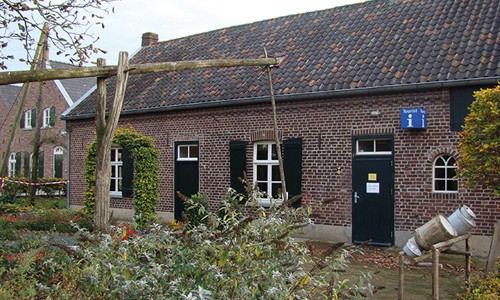In fact, Open Air Museum De Locht is not only a reflection of a way of life in North Limburg in the past, but also of a mentality and a sense of life. The farmer from North Limburg always had to fight for his existence because of the poor fertile soil. He lived in a remote area and was therefore completely on his own.
These circumstances formed the basis for innovations and changes, different forms of farming, different crops and different approaches to livestock farming. That has made him a skilled gardener. After the war, he threw himself into hitherto completely unknown activities, such as mushroom cultivation and asparagus cultivation. He helped to develop intensive livestock farming and brought it to great prosperity.
And with inventiveness, innovation, experimentation and business acumen, he has put North Limburg on the map of so-called agribusiness. Because he designs and builds greenhouses, machines, stables and tools, and develops the associated computer systems. He then sells them worldwide.
Small farms such as De Locht are the very beginning of gigantic undertakings, of huge greenhouse complexes throughout the region and of all the large-scale crops that the area did not even know fifty years ago, such as flowers and ornamental plants, but also numerous new vegetable varieties. And that, in turn, has led to the rise and current flourishing of the transport and logistics industry in North Limburg.
More than a hundred years ago, where the small farms were located, one of the most modern and varied agricultural and horticultural areas in the Netherlands was created. This gives museum De Locht a special value. What is preserved, conserved and exhibited there is nothing more than the beginning of a complete agricultural revolution, the consequences of which are clearly visible. That is the story of Open Air Museum de Locht, from small farmer to agricultural entrepreneur!
Proposer, Henny Rouschop:
“The text is not my own, but I discovered it in the brochure that was published in 2003 on the occasion of receiving the Jo Hansen Prize by the Locht. Despite inquiries with the foundation, I have not been able to trace the original author.”


